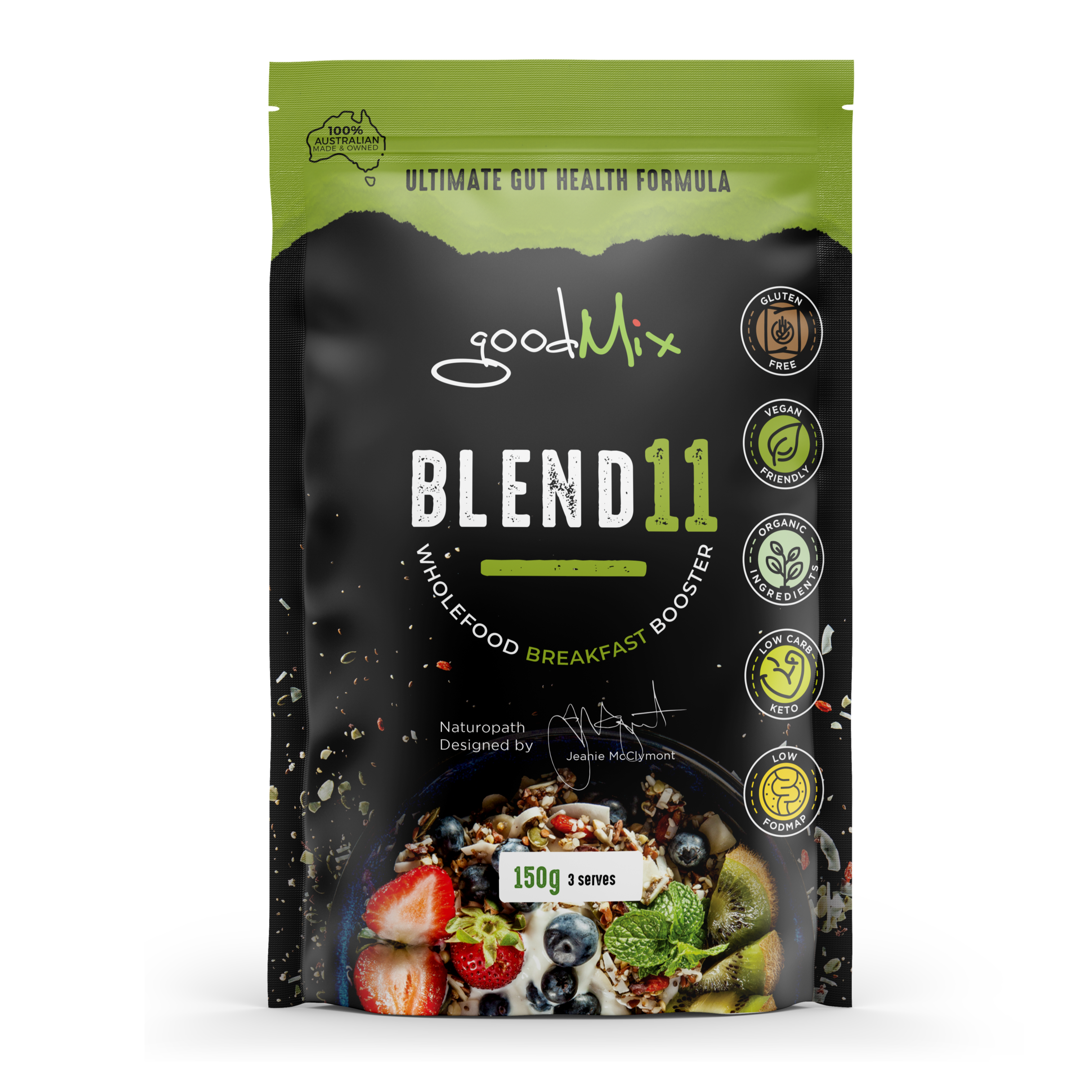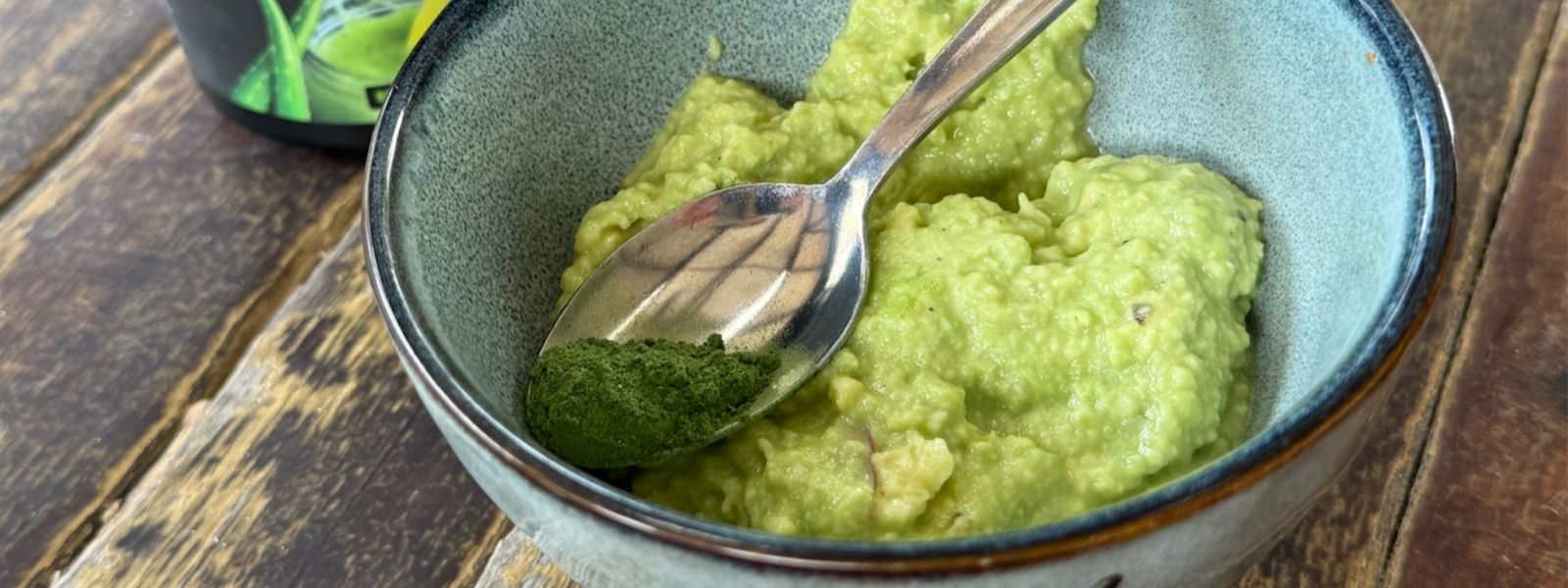
Paleo Diet vs Keto Diet: Key Similarities & Differences Explained
If you're into health and wellness, no doubt you'll have come across both the paleo and ketogenic diets. There are obvious differences in the two approaches but there is also a surprising amount of crossover. And while many people will be targeting weight loss or other health goals when adopting these plans, for some there may be a more fundamental need to follow a grain free diet. We thought we'd take a closer look at both approaches, explore the similarities and differences and which goodMix products fit if you're following the keto diet or a paleo diet plan.
What is the Paleo Diet?
The Paleo diet is also known as the Paleogenic, Paleolithic or even the Caveman diet. It aims to replicate the eating habits of our Paleolithic hunter-gatherer ancestors and focuses on whole, natural, unprocessed foods that are rich in nutrients. This diet excludes grains, dairy, legumes and processed foods.
The basic idea is that our bodies thrive on the foods humans ate long before farming and processed products came along. That means eating plenty of fresh meat, fish, veggies, fruit, nuts and seeds and skipping things like grains, legumes, dairy and refined sugar. By sticking closer to these whole, natural foods, the paleo approach aims to cut down inflammation, support gut health and help you feel your best without the modern extras that can sometimes cause trouble.
Key Components of the Paleo Diet:
- Lean meats and fish
- Fruits and vegetables
- Nuts and seeds
The aim of this approach is to reduce inflammation and improve overall health. Adopting a paleo plan can lead to several health benefits such as improved digestion and energy levels. It also aligns with a holistic lifestyle approach, focusing on quality nutrition.

What Is the Keto Diet?
The main idea behind the keto diet is that you follow a high-fat, moderate-protein and very low-carbohydrate eating plan. A typical ketogenic diet focuses on consuming healthy fats such as avocados, nuts, seeds and oils. Keto excludes most grains, sugary foods and starchy vegetables but allows some dairy foods, as long as they're low in carbs.
The keto diet is based on the idea of shifting your body’s main fuel source from carbs to fat. By eating very low amounts of carbohydrates and upping your intake of healthy fats, your body enters a state called ketosis, where it burns fat for energy instead of glucose. This switch is thought to help with weight loss, improve energy levels and support better blood sugar control. The focus is less on what foods you eat historically, like paleo, and more on how your body processes fuel.
Primary Elements of the Keto Diet:
- High Fat: Approximately 70-75% of your daily calories come from fats.
- Moderate Protein: Around 20-25% of your daily intake is protein.
- Low Carbohydrates: Only about 5-10% of your daily calories come from carbs, usually under 50 grams per day.

Many people find the discipline of the Keto diet challenging. But there are health benefits from this approach including improved metabolic health and increased mental clarity.
Choosing between these diets depends on your health goals and lifestyle and understanding their differences can help you make an informed decision. So let's explore the key distinctions between Paleo and Keto.
The Difference Between Keto and Paleo Diet Approaches
When comparing the Ketogenic vs Paleo diets, you have to start with their different foundational philosophies. Most people following a paleo approach see it as more than a diet - it's a lifestyle choice. The Paleo diet isn't just about eating like our ancestors. It's about reducing our environmental impact and building total body wellness through physical activity and mindfulness.
One of the main reasons the Keto diet has achieved popularity is because of the potential for you to lose weight quickly and potentially improve blood sugar control. It's less about a long term lifestyle approach based on ethical principles and more about shifting macronutrient ratios to achieve relatively quick changes in the body.
Key Principles of Each Diet:
- Paleo: Focus on ancestral eating, whole foods and balanced nutrition
- Keto: Concentrate on macronutrient manipulation to induce ketosis
Both diets eliminate grains, making them suitable for those with gluten intolerance. They also support gut health by reducing processed food intake. However, Paleo allows more flexibility with carbs and food variety. This makes it potentially more sustainable over a longer term.
Keto's focus is more scientific, aiming to alter the body's metabolism. As a result, some people might find this diet more challenging due to its restrictiveness. Both have dedicated communities, offering support through recipes and lifestyle tips.
Similarities Between the Keto Diet Versus Paleo
One of the interesting things is that there are a number of similarities between the two diets.
- Focus on whole, unprocessed foods – Both diets encourage eating real, natural foods like meat, fish, vegetables, nuts and seeds, while cutting out highly processed products.
- Low in refined sugar – Neither diet includes refined sugar, instead relying on naturally occurring sugars (like fruit in paleo or small amounts of berries in keto).
- No processed or refined grains – Both exclude bread, pasta, cereals and other products made with refined wheat or grain flours.
- Encouragement of healthy fats – While keto emphasises fats more strongly, both diets promote healthy fat sources such as avocado, olive oil, nuts, seeds and fatty fish.
- Avoidance of legumes – Beans, lentils and peanuts are off the list for both diets due to their carb content (keto) and anti-nutrient profile (paleo).
- Dairy restriction – Paleo excludes dairy entirely, while keto limits it to high-fat, low-carb options like cheese, cream and butter. In practice, both tend to reduce or remove dairy from the diet.
- Support for weight management – Each diet is often used to support fat loss and better body composition, though they do so in different ways.
- Potential gut health benefits – By cutting out processed foods, refined sugars and grains, both diets can help reduce inflammation and support a healthier gut environment.
Paleo Vs Keto: Foods to Eat and Avoid on Each Diet
If you're considering either diet it's worth understanding which foods are compatible with Paleo and Keto. While both emphasise whole, natural foods they have unique inclusions and exclusions.
Paleo Diet Foods:
The Paleo diet draws on foods presumed to be eaten by early humans. It focuses on:
- Foods to Eat: Fruits, vegetables, nuts, seeds, lean meats, fish and eggs
-
Foods to Avoid: Grains, legumes, dairy, refined sugars and processed foods
Keto Diet Foods:
The Keto diet aims for high-fat intake, modifying the body’s energy source. This translates into:
- Foods to Eat: High-fat dairy, meat, oily fish, eggs, nuts, seeds, low-carb vegetables
- Foods to Avoid: Sugary foods, grains, starchy vegetables, legumes, and most fruits
Both diets exclude grains and processed foods, offering a grain-free lifestyle that benefits those with gluten intolerance. Although similar in eliminating processed foods, Keto allows for more dairy and emphasises high-fat foods.
Both approaches can be difficult to stick to initially and it's really important to ensure you achieve good nutritional balance.
Grain-Free Living: Why Both Diets Exclude Grains
Both the Paleo and Keto diets promote a grain-free lifestyle, which can be beneficial for many people. Grains are often associated with inflammation and digestive issues. This is particularly true for those with gluten intolerance or coeliac disease.
The Paleo diet excludes grains because they weren't part of early human diets. Our ancestors thrived on meats, fruits and vegetables before agriculture introduced grains.
The Keto diet also avoids grains but this is due to their high carbohydrate content. Consuming grains can interfere with ketosis, the state where the body burns fat instead of carbohydrates.
Benefits of a Grain Free Diet:
- May improve digestion and reduce bloating
- Can lead to stabilised blood sugar levels
- Often results in better energy levels and mental clarity
Embracing a grain-free diet can contribute to better gut health and overall well-being. By focusing on alternative sources of nutrition, individuals may enjoy improved digestive comfort and greater vitality.
The great news is that we have developed 2 grain free mixes in our range: Blend13 and Bread Mix.
Blend13 was specifically developed for those following a Paleo diet. In fact, it was originally called NeoBlend (and featured a caveman on the label!). It's a fruitier, nuttier grain free version of our most popular product, Blend11.

And our newest product is Bread Mix, which is also grain free. It has all the goodness of bread, without the gluten, grains or carb crash! So it can be enjoyed in moderation on the Keto diet.

All of our products are gluten free so they can be enjoyed by coeliacs and those who struggle with sensitive tummies.
Carbohydrates, Fats and Protein: Macronutrient Differences
The Paleo and Keto diets differ significantly in how they approach macronutrients. The Paleo diet is more relaxed with carbohydrates. It includes fruits and starchy vegetables. This approach provides a balanced macronutrient profile, focusing on quality over quantity.
In contrast, the Keto diet strictly limits carbs to 5-10% of daily intake. This restriction is crucial to maintaining ketosis, where the body uses fat for energy. Hence, fats make up 70-80% of the diet, with proteins at a moderate level.
Key Macronutrient Features:
- Paleo: More carbs from natural sources
- Keto: High-fat, low-carb focus
- Protein: Moderate in both diets
To achieve the maximum health benefits, both diets require mindful planning. You need to focus on meeting your nutritional needs and maintaining adequate energy.
Dairy, Pulses and Sweeteners: Key Food Group Differences
The Paleo and Keto diets have distinct approaches to dairy, pulses and sweeteners.
The Paleo diet excludes dairy and pulses, in line with ancestral eating habits as both have been linked with digestive issues and inflammation.
In contrast, the Keto diet allows dairy, provided it's low in carbs. Cheese, butter and cream are popular choices for adding healthy fats.
Sweeteners vary between the two. Paleo emphasises natural sweeteners like honey or maple syrup in moderation. Meanwhile, Keto prefers sugar-free alternatives to avoid disrupting ketosis.
Key Food Group Inclusions:
- Paleo: No dairy, pulses; natural sweeteners sparingly
- Keto: Includes dairy, avoids pulses; allows low-carb sweeteners
Health Benefits: Paleo Diet vs Keto Diet
So which diet is the 'healthiest'? Well that depends on the reasons you might have for adopting them. Both can have health benefits, depending on what they are used for and how closely they're followed.
Paleo Diet Benefits
The Paleo diet focuses on whole foods, which can lead to improved digestion and reduced inflammation. Its anti-inflammatory nature is linked to joint health and vitality. Advocates of the Paleo diet also often report increased energy levels and mental clarity due to its nutrient-rich food choices.
It focuses on broader lifestyle changes and offers a more flexible approach to obtaining the wide variety of nutrients your body needs than the Keto diet. For that reason, it might be a healthier, more sustainable option for more people.
Keto Diet Benefits
The Keto diet is renowned for its potential to induce rapid weight loss. It enhances metabolic efficiency by encouraging fat as a primary energy source. The high-fat content of the diet can support brain health and hormonal balance.
Both diets have been associated with improved blood sugar control. This is particularly valuable for individuals with insulin resistance or type 2 diabetes.
Shared Health Benefits:
- Improved metabolic health
- Blood sugar stability
- Reduced inflammation
- Enhanced energy and mental clarity
These diets offer different approaches to health optimisation, supporting specific health goals and lifestyle choices. Each encourages mindful eating, promoting longer-term wellness and vitality.
Gut Health and Gluten Intolerance: Which Diet Supports You Best?
For those with gluten intolerance, both the Paleo and Keto diets are options that you could consider. They eliminate grains, reducing gluten exposure and digestive discomfort.
The Paleo diet prioritises whole foods, rich in fibre and nutrients. This focus can promote a healthy gut microbiome, aiding in digestion and nutrient absorption.
Keto's low-carb nature may initially cause digestive changes. However, it can eventually lead to improved metabolic health, benefiting gut flora and reducing inflammation.
Both diets encourage eliminating processed foods, which supports gut health. They allow the gut to heal and function optimally, crucial for those sensitive to gluten.
Benefits for Gut Health:
- Reduced gluten exposure
- Enhanced digestion
- Improved nutrient absorption
- Decreased inflammation
Choosing between these diets depends on personal health goals and how each diet aligns with your lifestyle needs and preferences.
Weight Loss and Metabolic Health: What Does the Science Say?
Both the Paleo and Keto diets offer weight loss potential. The Keto diet focuses on high-fat and low-carb intake. This combination triggers ketosis, a state where the body burns fat for energy, often resulting in rapid weight loss.
The Paleo diet emphasises whole foods, which naturally reduces calorie intake. This can lead to sustainable weight loss, supported by improved insulin sensitivity.
Each diet appears to positively impact metabolic markers like blood sugar and cholesterol levels, with both potentially delivering long-term health benefits.
Benefits of Each Diet:
- Keto: Quick fat loss
- Paleo: Sustainable weight management
- Both: Improved metabolic indicators
Sample Meal Ideas for Paleo and Keto Diets
Planning meals is crucial for both the Paleo and Keto diets. Most people stop diets when they feel limited in what they can eat or simply get bored. So meal planning is definitely recommended if you decide to pursue any new diet.
For the Paleo diet, focus on whole, unprocessed foods. Here are some meal ideas:
- Grilled salmon with asparagus
- Mixed leaves with walnuts and avocado
- Beef stir-fry with peppers
Keto meals emphasise low carbohydrates, high fats. Check out our blog on Keto Breakfast ideas for a bit more inspiration. Some options include:
- Scrambled eggs with spinach and cheese
- Cauliflower rice with chicken and butter
- Courgette noodles with creamy alfredo sauce
It's worth having a good variety of meals and recipes to use on both diets or you risk getting bored very quickly.
Which Diet Is Right for You?
Choosing between the Paleo and Keto diets depends on your health goals and lifestyle preferences. Consider your dietary habits and how likely you are to maintain them long term.
If you're focused on whole foods and variety, the Paleo diet might suit you better. It allows more flexibility with food choices, which might be easier to maintain.
The Keto diet could be ideal if you're aiming for rapid weight loss and metabolic changes. Its structured macronutrient guidelines appeal to those who love stricter guidelines.
Obviously both paleo and keto diets have unique benefits but choosing which is right for you depends on your personal health goals, dietary preferences and lifestyle. We should highlight that it's worth checking with your healthcare provider before embarking on any long term diet program.
And remember - there are goodMix products that you can include whichever plan you're following. We'd love to hear your stories and favourite recipes if you're following the keto or paleo diet. Let's inspire each other to stay healthy and happy!




